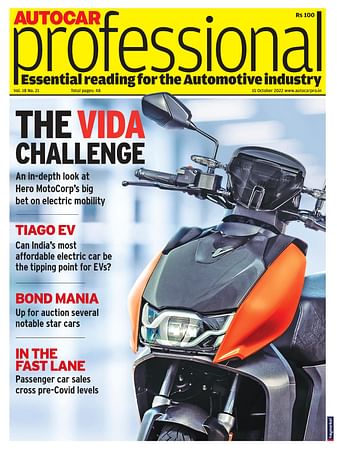Visteon bags second SmartCore domain controller program order with a European automaker
The company is slated to introduce the second SmartCore program on a global vehicle platform in 2020.
Automotive cockpit electronics supplier Visteon Corporation has secured a second major customer vehicle program for its industry-leading cockpit domain controller technology – SmartCore.
SmartCore is designed to integrate infotainment, instrument clusters, information displays, head-up displays, advanced driver assistance systems (ADAS) and connectivity – providing a foundation for the evolution to autonomous driving.
Visteon says it is the sole supplier offering an automotive-grade, integrated domain controller approach that can independently operate the infotainment system, instrument cluster and potentially other features on one System on Chip (SoC).
Visteon is scheduled to launch the first SmartCore-based solution in 2018, for a European vehicle manufacturer. This second SmartCore business win, also with a European automaker, offers instrument cluster and infotainment features and expands the platform to high-end applications with industry-first 3-D display and augmented reality head-up display capabilities.
“This second major business win further validates SmartCore as a viable solution to manage the increasing cost and complexity of in-vehicle electronics,” said Sachin Lawande, Visteon president and CEO. “Visteon is well positioned to lead the consolidation of electronic control units in the cockpit space, and we are in active dialogue with several automakers to adopt this technology into their vehicles.”
The SmartCore architecture is fully scalable and cyber-secured through virtualisation of the different cores and controlled firewalls. This enables independent functional domains with different levels of ASIL requirements – initially driver information and infotainment – while future domains can be added to operate separately and securely.
“For the automaker, SmartCore offers a cost-effective, space-saving cockpit electronics solution that is fully scalable and can be updated over-the-air,” Lawande added. “Drivers and passengers will benefit from an enhanced instrument cluster and infotainment experience, boosted by a single seamless human machine interface, offering access to multiple levels of information.”
Also read: Visteon to debut next-gen Phoenix infotainment platform, latest cockpit electronics tech at CES 2017
RELATED ARTICLES
Sept 2024 From R&D incentives to EV infrastructure: What auto components industry expects from Budget 2024
Sept 2024 From R&D incentives to EV infrastructure: What auto components industry expects from Budget 2024
US car majors hit the brakes on driverless cars
Ford Motor and Volkswagen to close self-driving startup Argo AI, due to lack of technology and clear regulations.
Autoliv and Geely to develop advanced safety tech for future vehicles
Scope of cooperation includes safety for high-level autonomous driving, intelligent steering wheel technology, a 360deg ...






 By Autocar Pro News Desk
By Autocar Pro News Desk
 04 Jan 2017
04 Jan 2017
 3576 Views
3576 Views









